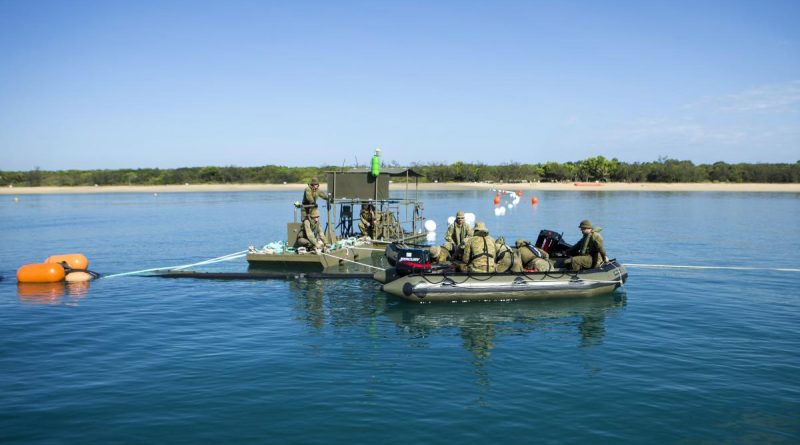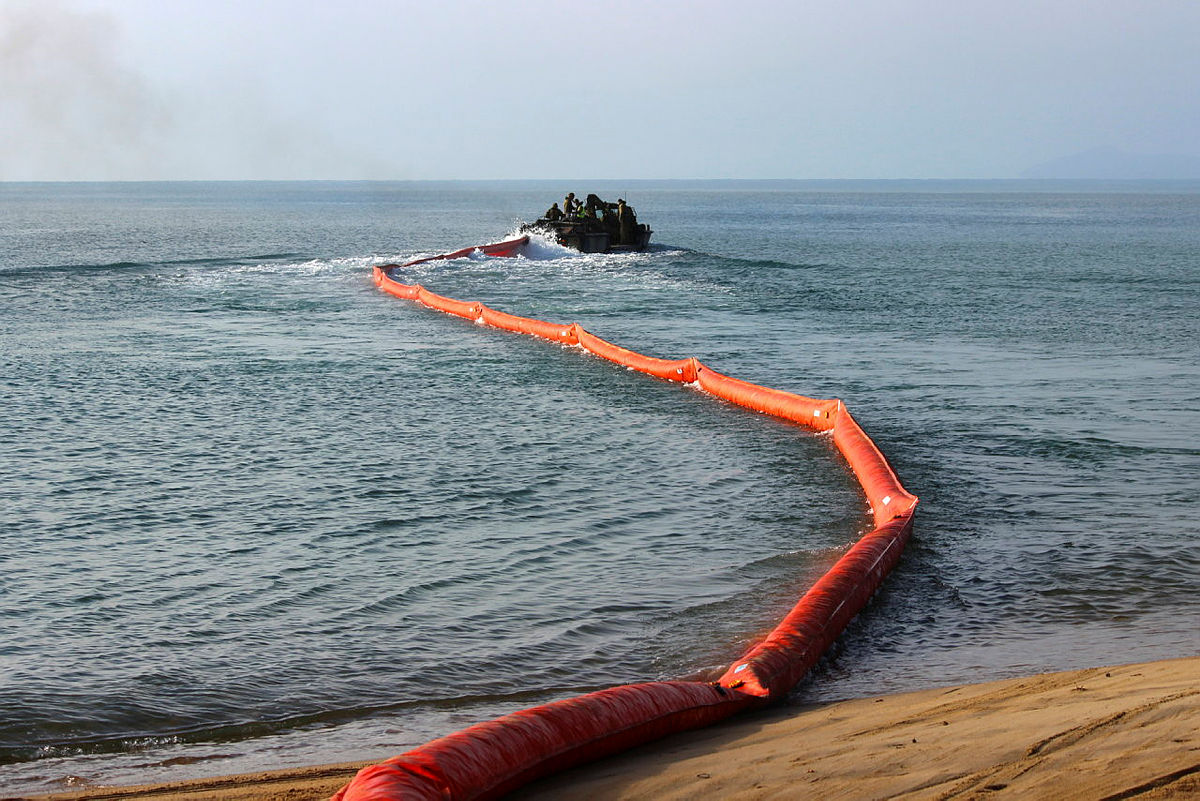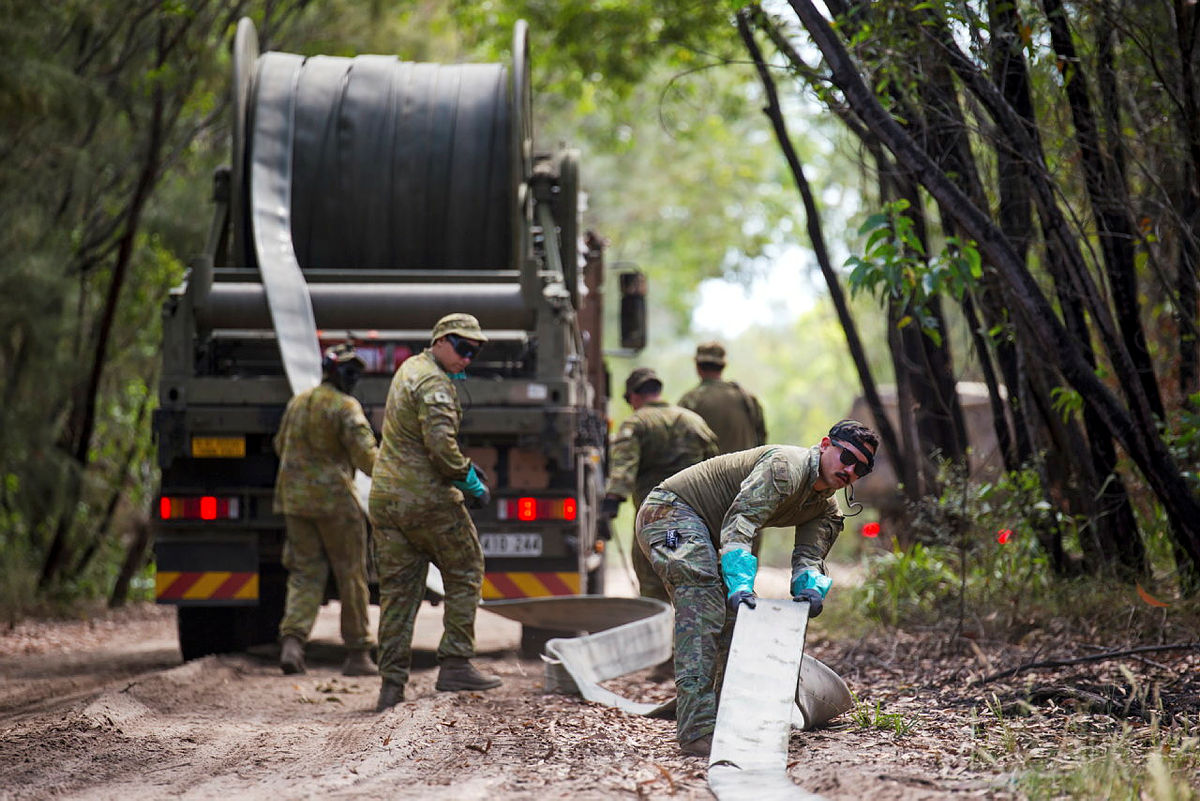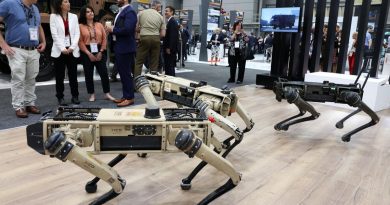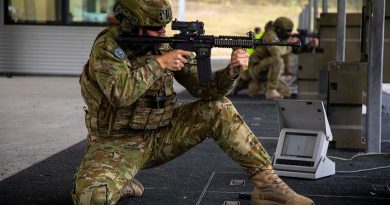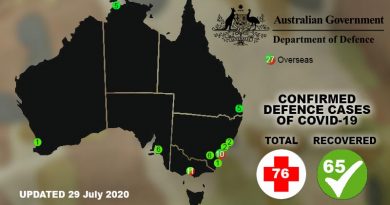Petroleum operators qualify in barge-to-beach fuel delivery
Share the post "Petroleum operators qualify in barge-to-beach fuel delivery"

How do you move enough fuel from a ship sitting over the horizon to fuel an Army advancing inland, without worrying about tides and shallow waters?
CAPTION: Australian Army petroleum operators set up a pontoon and towed flexible barge system at the Cowley Beach Training Area during Exercise Overland Nautical Petros 21. Story by Private Jacob Joseph.
You tow an 80,000-litre bladder to a temporary pontoon floating 500m from the beach – a job, until recently, few soldiers were qualified to perform.
A group of petroleum operators from the 9th and 10th Force Support Battalion (FSB) gained qualifications in deploying and operating Army’s towed flexible barge system (TFBS) during Exercise Overland Nautical Petros at Cowley Beach from September 27 to November 7.
It was the first time in five years the course was run, and according to activity Officer-in-Charge Captain Gary Tyler the activity has more than doubled the number of soldiers qualified, with two TFBS operator courses and one supervisor course held during the exercise.
It was also the first time in years that petroleum platoons have come together to exercise their full capability, with the TFBS courses held concurrently with other trade-training activities, such as bulk fuel installation, inland pipeline distribution systems and pump missions.
“Each platoon has their own niche capabilities,” Captain Tyler said.
“The 9th Platoon has a marine focus, whereas the 8th Platoon has an inland focus – mainly the pipelines.”
CAPTION: Australian Army petroleum operators set up a towed flexible barge system at the Cowley Beach Training Area.
Previously, soldiers completed a civilian maritime spill-response accreditation, and other pre-requisite training, over a two-month period before training for six weeks in the field.
It was a career highlight for 10FSB, 9th Platoon, petroleum operator Private Annette Magill, who also completed a small-boat course in preparation.
“It’s something that can be physically demanding but, at the same time, I really enjoyed it because I was out there doing something different and learning a new skill like controlling boats,” Private Magill said.
A beach storage area with large bladders was established, where fuel was tested for quality before being pumped inland.
9FSB, 8th Platoon, bulk fuel installation Second-in-Charge Lance Corporal Brad Cope said the exercise was a chance to see the different jobs within his trade.
“We were doing a lot of inland pipe distribution system work, which we only get to deploy into the field once a year,” Lance Corporal Cope said.
CAPTION: Australian Army petroleum operators set up an inland pipe distribution system at the Cowley Beach Training Area.
“We got to mingle with the 9th Petroleum Platoon and saw what they did with the beach storage area.”
While the TFBS courses ensured enough soldiers were qualified to support the current capability, course instructor Sergeant Lee Anderson, of 10FSB, believed the training would allow units to better support test-and-evaluation activities of the Joint Project 8190 (JP8190), the Commonwealth-industry collaboration set to provide bulk fuel-distribution systems throughout Australia and overseas in the coming years.
“There’s room for improvement,” Sergeant Anderson said.
“Qualifying as many people as we can in the current systems will allow them to understand the shortfalls and inform the delivery of the next line of kit.”
JP8190 is set for a two-phase rollout, according to Director Land Mobility and Support Program Colonel Colin Basset, with a deployable bulk-fuel system also offering an Air Force expeditionary capability.
“Phase 2 will seek to deliver a truly joint deployable bulk-fuel system that meets the needs of the joint land forces’ deployed infrastructure requirements,” Colonel Basset said.
.
.

.
.
Share the post "Petroleum operators qualify in barge-to-beach fuel delivery"

